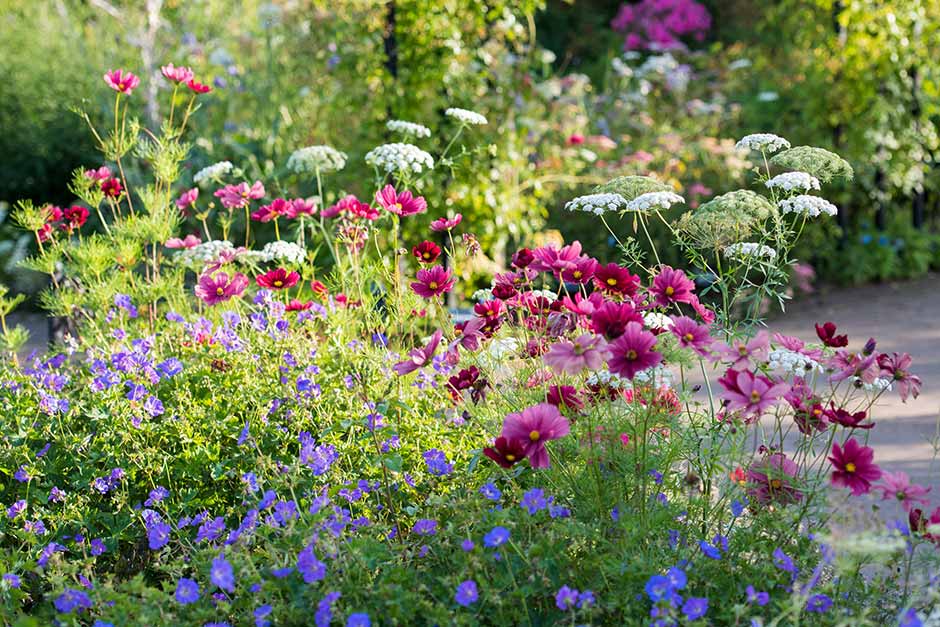RHS Flower Shows are always packed with brilliant ideas for gardening in small spaces. By their very nature, they force the best designers to come up with ways of adding height and structure into spaces that are often just a few metres wide.
Trees and shrubs are a vital part of garden design. But how do you fit them in without them overwhelming everything else? Luckily there are two techniques you can use to bring in height without losing all your space and light, as shown by these award-winning designs from the RHS Hampton Court Palace Garden Festival 2021.
In the Viking Friluftsliv Garden, carefully grown and pruned plants allow views through them, while still giving height. Osmanthus (Osmanthus × burkwoodii) is a useful evergreen shrub with scented white flowers in spring. By removing all the side shoots and just keeping the vertical stems, you prevent the plant looking blobby, while still retaining its impact.
Amelanchiers (Amelanchier alnifolia, A. lamarckii and others) are superb small garden trees, with white spring blossom and vibrant autumn colour. Here they provide useful height without overshadowing the planting below.
The Cancer Research Legacy Garden shows brilliantly just how effective multi-stemmed trees can be. In the central gravel circle, there's only room for one tree - a river birch, Betula nigra. By growing it as a multi-stemmed specimen you get much more impact, bringing lots of its gorgeous shaggy Bark is the outermost layer of woody plants (trees, shrubs and woody climbers). It is several cells thick and provides protection against physical damage, disease and environmental stresses. Bark comes in a wide variety of colours and patterns, and these can help gardeners when identifying plants. The fissures and crevices of bark on older plants also creates valuable habitat for many garden creatures as well as lichens and small plants.
Pruning and training can bring new life to old favourites. In A Place to Meet Again, a very traditional street tree, Swedish whitebeam (Sorbus × intermedia) is made almost into a shrub by growing it as a multi-stemmed plant. This brings its delightful silvery leaves down to eye level, contrasting beautifully with the darker hedge behind.
The RHS Garden For A Greener Future shows the value of being inventive with plants, and thinking outside the box. Plants that are traditionally grown as trees, including beech (Fagus sylvatica) and field maple (Acer campestre) are grown as topiary mounds, while shrubby amelanchiers and flowering dogwoods have been crown-lifted to make small trees.
Hazel (Corylus avellana) is a familiar woodland plant, seen here in The Communication Garden. Many of our A native plant is one that originated or arrived naturally in a particular place without human involvement. In the British Isles, native plants are those that were here during the last ice age or have arrived unaided since.



